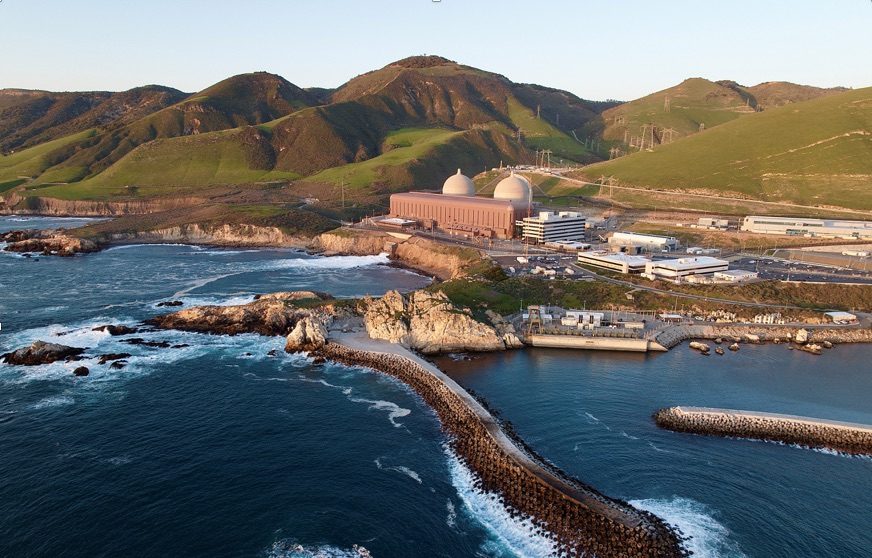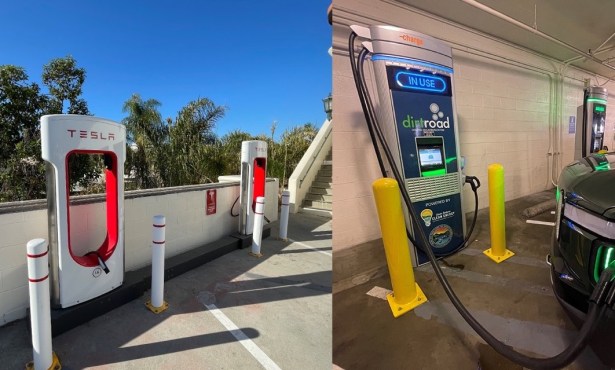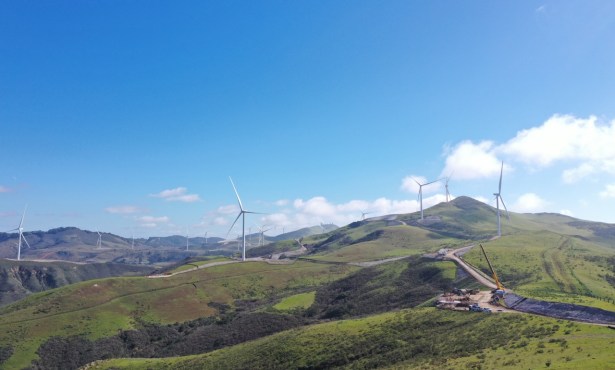Application Filed to Extend Life of Diablo Canyon Power Plant Another 20 Years
PG&E Submits Application with NRC to Renew Plant’s License

Renewal of Diablo Canyon Power Plant’s license was formally filed with the Nuclear Regulatory Commission by owner Pacific Gas & Electric Company on November 7, more than a month ahead of the end of 2023 deadline. The 2,200 megawatts of carbon-free power generated by the nuclear plant can provide electricity for as many as three million of California’s 39 million residents, fully 17 percent of the state’s supply of zero-carbon electricity, according to PG&E. But is it still needed?
A number of groups fighting the nuclear power plant contend a potential for disaster exists from the aging facility, finished in 1973. Nonprofits like the Mothers for Peace in San Luis Obispo, where the plant is located, and the Alliance for Nuclear Responsibility argue that questions about brittle welds and nearby earthquake faults remain unanswered. Friends of the Earth is seeking to overturn the NRC’s licensing procedure for Diablo in the Ninth Circuit Court of Appeals.
The NRC agreed to shorten the five-year window for the license renewal, causing Friends of the Earth’s legal director, Hallie Templeton, to say: “PG&E’s reckless push to extend the life of Diablo Canyon, while unsurprising, should set off alarm bells for everyone living near this high-risk facility. Diablo Canyon’s operations are extremely dangerous, harmful to the climate and put all of California at risk of a catastrophic accident.”
In answer to the question of safety at a nuclear facility located 90 miles northwest of Santa Barbara, PG&E’s chief nuclear officer, Paula Gefen, said, “We have a dedicated workforce that is committed to operating DCPP with integrity and safety at the forefront.”
During this shortened window, PG&E has a number of state agencies to persuade in addition to the NRC: It received a lease extension from the State Lands Commission in June for the strip of beach it uses, but the California Energy Commission and the California Public Utilities Commission are assessing actual costs and outage costs against renewed operations and market revenues. Their documents are underway or in a comment period and are supposed to be final before the end of 2023.
If PG&E’s license renewal application passes muster, Diablo would be allowed to operate beyond its current end dates of 2024 and 2025, while the application is further reviewed, said PG&E spokesperson Suzanne Hosn. The process takes longer than a year, after which PG&E would submit for Coastal Zone Management Act recertification with the California Coastal Commission.
Bruce Severance, a regulatory compliance engineer, has argued that certain welds, known to be faulty from Reactor One’s inception, are so brittle that replacement of the reactor vessel was a considerable cost the CPUC must consider. Severance and Digby MacDonald, a nuclear engineering and materials science professor at UC Berkeley, submitted a paper to the Diablo Canyon Independent Safety Committee outlining the fracture toughness problem with the welds, but that committee won’t be meeting to discuss their conclusions until February 2024.
As for the need for Diablo to continue generating electricity, David Weisman of the Alliance for Nuclear Responsibility pointed to Governor Gavin Newsom’s statement in October that California’s battery storage capacity reached more than 6,600 megawatts: “More than equivalent to the power Diablo generates,” Weisman said.
The turmoil surrounding the nuclear power plant began after PG&E decided to abandon its application for a license renewal in 2016. That would have shuttered the power plant’s two reactors in 2024 and 2025. However, Governor Newsom deemed the power was needed in the face of air-conditioning use during California’s increasingly hot summers. The State Legislature passed Senate Bill 846 last fall to loan PG&E $1.4 billion and extend Diablo’s operations to 2030.
The CPUC held a hearing on Tuesday, at which Linda Seeley of Mothers for Peace addressed the commissioners. She told them California was on track to add another 6,000MW in renewable power by 2026, three times Diablo’s output. Regarding safety, she said, “while the Legislature and the CPUC have been relying on the NRC to ensure the safe operation of Diablo Canyon past the reactors’ 2024/2025 license expiration dates, the NRC itself appears to be bending to the State requests — rather than protecting the public.”
Seeley emphasized the decision to prolong Diablo’s life could not be a political one. “Put it together,” she urged the commissioners. “No inspection of the Unit 1 pressure vessel since 2002; active earthquake faults under the plant — couple those conditions with the fact that we don’t even need the power from Diablo Canyon, and you can easily reach a decision that your grandchildren will thank you for.”



